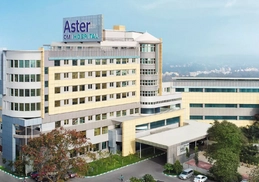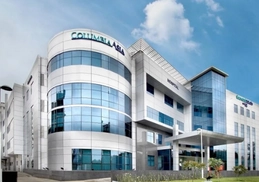
+91 8095511877

+91 8095511877
Orthognathic surgery or corrective jaw surgery helps to change the way your jaws look. If you feel that your upper or lower jaw is out of proportion with the rest of your face, orthognathic surgery can help you to correct it.
Jaw surgery can correct jaw discrepancies where one jaw is smaller or larger than the other. If you have a prominent chin, the procedure can set it right to normal as well.
Apart from changing the way you look, the surgery can also correct various problems in function as well. Most of these problems occur due to an abnormality in the relative positions of the jaws. It can create problems with chewing, speaking, and even breathing through the mouth. Jaw surgery will change this position to a better one making it easy for you to chew, speak, breathe, etc.
You will need orthodontic treatment before or after the surgery to align the upper and lower teeth.
It is ideal to have jaw surgery after the completion of the growth. In girls, this will be between fourteen to seventeen years of age while in boys, it is nineteen to twenty-one.
You may have the procedure if you are not happy with the way your jaws look. Of course, it is essential that your surgeon also agrees with you. Some of the common issues that affect the looks of the jaws are
All these not only affect the way you look but also affects the way you chew. Improper positioning of the jaws will make it difficult for your teeth to come together while biting or chewing. You will also find it difficult to close your lips properly.
Some of the common problems with jaw when the jaws are not in alignment are
All of these can affect your ability to chew correctly. It causes strain in the jaw muscles as well as the temporomandibular joint, which connects the upper and lower jaws.
Orthognathic surgery will help to reposition the jaws and correct these problems.
1. Maxillary osteotomy
This surgery corrects the deformities of the upper jaw like
During the surgery, the surgeon detaches the upper jaw (including the palate and upper teeth) from its position. The next step is to place the upper jaw in alignment with the lower jaw.
The surgeon uses bone grafts to fill the gaps that occur while moving the jaw forward. While taking the jaw backward, the surgeon will trim the back ends of the upper jaw to make room.
The surgeon will use titanium screws to fix the jaw in its new position. After some time, the bone will grow over the screws to hold the jaw firmly in its new position.
2. Mandibular osteotomy
This surgery corrects deformities of the lower jaw or mandible. It corrects
In this surgery, the lower jaw is cut vertically behind the molars. This segment is taken forward or backward according to the position of the lower jaw. The surgeon will then use screws to fix the jaw in its new position. Trimming the posterior ends will make space for moving the mandible backward.
3. Sagittal split osteotomy
This procedure is a type of mandibular osteotomy to correct a lower jaw that protrudes or recedes. It is the most common procedure to correct severe overbite and underbite.
In this, the bone gets cut horizontally as well as vertically. The lower jaw is moved to the front or back, depending on the type of correction needed.
Bone grafting will be necessary to fill the space that occurs while moving the lower jaw forward. Trimming of the ends will make space while moving the jaw backward. The surgeon will then stabilize the jaw with the help of screws till bone forms over them.
4. Genioplasty
If you have a prominent chin or chin that recedes, a genioplasty osteotomy will help to correct it. In a genioplasty, the surgeon will move the chin portion backward or forwards, depending on the situation. The surgeon will detach the lower jaw at the premolar region to reposition it. Bone grafting or trimming of the bone will help to fix it in the new position. The surgeon will use screws to keep it in place.
The type of osteotomy you will have will depend on the kind of jaw deformity. If the problem is with your upper jaw, you will have a maxillary osteotomy. If it is the lower jaw that is the problem, a vertical split or sagittal split osteotomy will be a common choice. A genioplasty will help to correct issues with the chin.
Before the surgery, you will have a medical examination to assess your health status. An osteotomy is a major surgery, and you need to be in good health while having it.
The surgeon will take X-rays and OPGs of your face to make various measurements. It will help in assessing the amount of correction and the areas where the bones need cutting. Furthermore, it gives an idea about the approximate amount of bone grafting or trimming necessary
You will have general anesthesia that will put you to sleep during surgery.
The surgeon will start by making incisions in the required areas. All the incisions will be inside the mouth, which prevents external scars from surgery.
The next step is splitting the upper or lower jaw bone, according to the type of osteotomy, at a particular position.
Now the surgeon will reposition the separated segment forwards or backward as is necessary. Bone grafts taken from the ribs or thighs will help to fill the gaps that occur while moving the jaw forward.
In cases of backward movement of the jaw, the surgeon will trim the ends of the jaw segment as necessary. The surgeon will also align the upper and lower teeth as needed.
Once happy with the position, the surgeon will use titanium screws to stabilize the jaw in its new place. The surgeon will also use wires to tie the upper and lower teeth together. It will also help the jaws from moving from its new position.
After a few days, the bone will form over the new joints and the screws. So, there is no need to remove the screws.
You will come back to your hospital room a few hours after surgery. It is normal to feel some pain once the effects of anesthesia go off. You will also find wires are connecting your jaws. There will be some bruising as well as swelling inside the mouth.
You will find it difficult to speak. It is better to give rest to your mouth for a few days. Liquid food is ideal for the first two days
While in the room, you will have to walk around to promote better blood circulation. It helps in the early healing of the wound and a faster recovery.
You will be back home after a couple of days. You will remain on a liquid or mashed diet until the surgeon removes the wires connecting your jaws.
The swelling and bruising will subside in a week. The surgeon will then remove the wires, and you will be able to go back to routine activities.
Jaw surgery – What to expect
Jaw surgery can change the way you look. Very high expectations from the surgery is usually a cause of dissatisfaction with the results. So, having realistic expectations is the key to satisfaction.
The full effect of the operation can be seen after the swelling and bruising disappears. It will take about three to four months for this to happen.
Also, it will take some time for you to accept the change in your face while looking at a mirror. You may even look ‘different.’ As time passes, you will start appreciating your ‘new face’ and will be happy looking at a mirror. It will do wonders to your self- belief, and confidence to change your life for the good.
Jaw osteotomies are generally safe surgeries with a very high rate of success. But, like in any other major surgery, there are chances of complications as well. The common risks and complications are
Most of these complications are minor and do not require any major treatment. Re-surgery will be necessary only in very few situations


This article has been reviewed for medical correctness and relevance by
Dr Faizal CP
Dr FAIZAL CP is a consultant Pedodontist also working as Professor & Head , Dept of Pediatric & Preventive Dentistry , Kannur Dental College, Kerala, India. He has more than 18 years of academic experience and has published more than 50 scientific articles in indexed journals . His areas of interest are dental traumatology , pediatric endodontics and dental materials

Juma Rasheed
Oman


Apollo Chennai

Apollo Indraprastha

Aster CMI

Columbia Asia

Fortis Bangalore

Fortis Memorial Research Institute(FMRI)
Frequently Asked Questions
Is jaw surgery a major surgery?
How long does it take to recover from jaw surgery?
How much does jaw surgery cost in India?
Is jaw surgery painful?